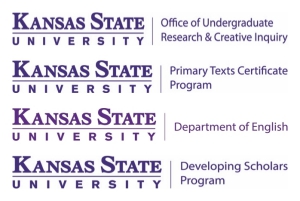Student Major/Year in School
Economics, Second Year
Faculty Mentor Information
Dr. Johnathon Herington, Department of Philosophy
Abstract
This research project explores racial justice in the context of access to public universities in Kansas. This research aims to establish if 4-year universities in Kansas achieve two specific criteria, demographic parity and equal opportunity, with respect to enrollment of African Americans. Demographic parity is achieved when the portion of students enrolled in a college who are African American is relatively equivalent to the portion of Kansans who are of ages 18 to 25. Equal Opportunity is satisfied when the portion of students who are in college who are African American is relatively equivalent to the portion of African Americans who are college ready after high school. To do so, we analyzed data from the Kansas Department of Education, Kansas Board of Regents, and United States Census Bureau. We collected this data over a ten-year period; from 2007-2017. While Kansas universities may satisfy the equal opportunity criteria, they fail to satisfy demographic parity. We explore some possible explanations for why this is so, including the effort to recruit students from African American communities. We also examine some ways in which a lack of demographic parity may harm students of color on campus.
Creative Commons License

This work is licensed under a Creative Commons Attribution-Noncommercial 4.0 License
Recommended Citation
Richards, Bradley (2019). "Racial Justice in Access to College in Kansas," Kansas State University Undergraduate Research Conference. https://newprairiepress.org/ksuugradresearch/2019/posters/18
Racial Justice in Access to College in Kansas
This research project explores racial justice in the context of access to public universities in Kansas. This research aims to establish if 4-year universities in Kansas achieve two specific criteria, demographic parity and equal opportunity, with respect to enrollment of African Americans. Demographic parity is achieved when the portion of students enrolled in a college who are African American is relatively equivalent to the portion of Kansans who are of ages 18 to 25. Equal Opportunity is satisfied when the portion of students who are in college who are African American is relatively equivalent to the portion of African Americans who are college ready after high school. To do so, we analyzed data from the Kansas Department of Education, Kansas Board of Regents, and United States Census Bureau. We collected this data over a ten-year period; from 2007-2017. While Kansas universities may satisfy the equal opportunity criteria, they fail to satisfy demographic parity. We explore some possible explanations for why this is so, including the effort to recruit students from African American communities. We also examine some ways in which a lack of demographic parity may harm students of color on campus.


